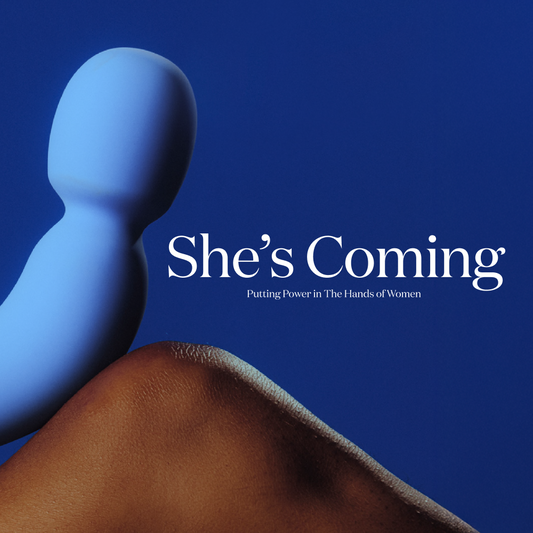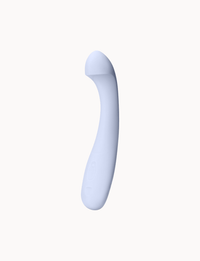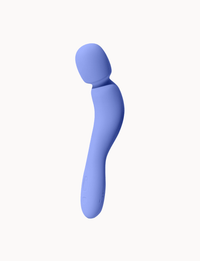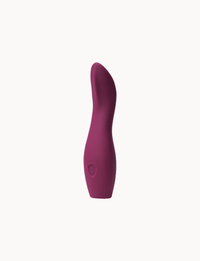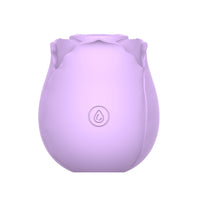Pleasure is not equitable. Cis women* are four times more likely to say that sex wasn’t pleasurable in the past year (Herbenick et al, 2010). Cis-men* have 20 to 50% more orgasms as heterosexual cis-women in partnered sexual encounters (Laumann,1994; Lloyd, 2005; Herbenick et al., 2010). It’s a gap even bigger than the pay gap. So WTF?
* "cis" means the person’s gender identity matches the sex they were assigned at birth.
In 1998, Australian urologist Helen O’Connell showed us that our knowledge of the clitoris was simply the tip of the iceberg. She led groundbreaking MRI studies of the clitoris, which were published in 2005. The clitoris, as previously understood, was a small external genital structure, a sensitive "button" of sorts.
O’Connell demonstrated that the clitoris is much larger than imagined, including abundant internal parts and containing over 8000 nerves — twice as many as a penis holds. The clitoris consists of an external "head," attached to a triangle-shaped body two to four centimeters long that gives rise to "arms" that can be up to nine centimeters long. The body also gives rise to two bulbs, that contain the same erectile tissue and erection potential as a penis, which sit between the arms on either side of the vulva and wrap around the vagina.
All those nerves make for a ton of pleasure potential. Nearly 75% of women say clitoral stimulation is necessary for orgasm, or makes orgasm feel better (Herbenick et al., 2018; Wade et al., 2005). But in the bedroom, that potential isn’t always realized. While men and women understand the role of clitoral stimulation in vulva orgasms more and more (Salisbury & Fisher, 2014), cis-men consistently underestimate the number of cis-women who never or inconsistently experience orgasm during penis-in-vagina sex (Laumann et al., 1994; Shirazi et al., 2018).
More than 50% of people with vulvas report having faked an orgasm (Ellsworth & Bailey, 2013), which can further perpetuate the myth that penetration alone will lead to mind-blowing orgasms. This is the Pleasure Gap.
Who Experiences The Pleasure Gap, And Why?
Gender and orientation of the partner are a big piece of the puzzle. Studies that include folks in queer relationships in addition to folks in heterosexual relationships show that the experience of sex without orgasm was only common for heterosexual relationships, not queer ones (Blair, Cappell & Pukall, 2018).
One factor leading to the gap between heterosexual and queer women’s pleasure is that queer women typically feel more entitlement to pleasure both from themselves and from a partner (Goldey et al., 2016). However, orgasms aren't everything in the pleasure equation. Heterosexual cis-women and men typically prioritize their partner's orgasm above their own during partnered sex. Ironically, this is often to the detriment of… actual orgasms. An over-focus on orgasm as the only goal of sex can put a lot pressure on "performing," and can put cis-women in a position of feeling the need to fake orgasms as a form of emotional labor for their male partners (Goldey et al., 2016; Fahs & Swank, 2017; Opperman et al., 2014; McClelland, 2011).
And not all orgasms are created equal. Some just feel better than others (Herbenick et al, 2018). Factors that influence orgasm quality include clitoral stimulation, having time to build up arousal (about 20-40 minutes for folks with vulvas) and having a partner who knows what you like. Pleasurable sex and orgasm contain both erotic and nurturing elements, like emotional intimacy or closeness. Location, pressure, the style of touch and the touch patterns used are further dimensions of the personal sensation map that influence the big O.
So, How Do We Close The Gap?
Make the Clitoris the Star
While vaginal penetration adds to overall sexual pleasure for many vulva-owners, adding clitoral stimulation during sex increases the likelihood of orgasm. Nearly 3 out of 4 women say clitoral stimulation is necessary for orgasm, or makes their orgasms feel better (Herbenick et al, 2018; Wade et al, 2005). Most women prefer clitoral touching on or around the clitoris, with mild to medium pressure. Clitoral stimulation using an up-and-down, circular, and/or side-to-side motion in a consistent pattern are especially pleasurable (Herbenick et al, 2018).
De-stress
Everything that happens outside the bedroom also impacts pleasurable sex. Still thinking about that last work meeting? You’re late to pick up the kids? The dishes are still in the sink? Those negative thoughts about your body coming up again? Sensuality is all about the senses (duh), so focus on being in the moment. By taking a moment to slow your mind and re-focus on your five senses, you can stay present. Your body will follow suit.
Know your Turn-Ons and Turn-Offs
According to Emily Nagoski (2015), vulva-owners typically have a more sensitive “brake” (your turn-offs), compared to their “accelerator” (your turn-ons), and releasing that brake, rather than only hitting the accelerator, is the holy grail of enjoying sex. In Come As You Are, Nagoski shares her research on how to understand what turns you on and off. In sum, be gentle to your body and leave myths about how sex should work behind in order to focus on how sex actually works for you.
Masturbation Unlocks Self-Knowledge
Paradoxically, vulva owners need to focus on knowing their own bodies and take responsibility for their pleasure and orgasm instead of “giving” their orgasm to their partner for their partner’s benefit (Goldey et al., 2016). 95% of people reliably experience orgasm during masturbation, making it the perfect way to learn about yourself, and what your body likes. Solo sex can increase libido and desire and also enhance the orgasm likelihood during partnered sex. Some specific hand-based techniques and instructions can be found on OMG Yes, a can-do and pleasure-focused educational website showing vulvas of all shapes and ages.
What About Porn?
This is an easy one. Emily Nagoski (2015) gives a pragmatic tip: “if it makes you feel worse about your body, stop watching it. It if makes you feel better, watch more of it!”
Get Some Great Toys
Products designed to provide sexual pleasure to vulvas can make a huge difference. These sex toys are not made to find just some tiny button at the top of the vulva, but are designed to stimulate a much larger area. Well-crafted and original products can enhance both solo and partnered sexual pleasure, like Fin, which fits on your fingers and lets your hands roam freely, the hands-free Eva that fits comfortably in the vulva for extra stimulation during partnered sex, or the flexible Pom that contours to your palm and body. Good products help vulva-owners understand their own “pleasure map,” and can help them enhance their sexual pleasure and communication with their partner.
Involve Your Partner
Letting your partner in on what you’re learning about your body, your turn-ons and turn-offs, and what kinds of things you’re interested in exploring doesn’t have to be a drag. Learning how your body experiences pleasure is much more fun when you bring an attitude of play and curiosity into the conversation (Perel, 2006). Treat yourselves to some “research time” together. Lots and lots of “research time”..
We believe in a world where pleasure is available to everyone.
Dame is committed to closing these pleasure gaps, and we invite you to be a part of these conversations. There are still a lot of research gaps around what exactly vulva-owners identify as pleasurable, and how people experience sexual pleasure during both solo and partnered sex. Together, we can help everyone have immensely pleasurable sexual experiences that are fulfilling, empowering, and equitable.
References
- Blair, K. L., Cappell, J., & Pukall, C. F. (2018). Not all orgasms were created equal: Differences in frequency and satisfaction of orgasm experiences by sexual activity in same-sex versus mixed-sex relationships. The Journal of Sex Research, 55(6), 719-733.
- Ellsworth, R. M., & Bailey, D. H. (2013). Human female orgasm as evolved signal: A test of two hypotheses. Archives of Sexual Behavior,42(8), 1545–1554.
- Fahs, B., & Swank, E. (2017). The Other Third Shift?: Women’s Emotion Work in Their Sexual Relationships. Feminist Formations, 28(3), 46–69. https://doi.org/10.1353/ff.2016.0043
- Goldey, K. L., Posh, A. R., Bell, S. N., & van Anders, S. M. (2016). Defining Pleasure: A Focus Group Study of Solitary and Partnered Sexual Pleasure in Queer and Heterosexual Women. Archives of Sexual Behavior, 45(8), 2137–2154.
- Herbenick, D., Reece, M., Schick, V., Sanders, S. A., Dodge, B., & Fortenberry, J. D. (2010). Sexual behavior in the United States: Results from a national probability sample of men and women ages 14–94. Journal of Sexual Medicine,7(Suppl. 5), 255–265.
- Herbenick, D., Fu, T.J., Arter, J., Sanders, S., & Dodge. B. (2018). Women's Experiences With Genital Touching, Sexual Pleasure, and Orgasm: Results From a U.S. Probability Sample of Women Ages 18 to 94. Journal of Sex and Marital Therapy, 44(2), 201-212.
- Laumann, E.O., Gagnon, J.H., Michael, R.T., & Michaels, S. (1994). The social organization of sexuality: Sexual practices in the United States. Chicago: University of Chicago Press.
- Lloyd, E. A. (2005). The case of the female orgasm: Bias in the science of evolution. Cambridge: Harvard University Press.
- McLelland, S.I. (2011). Who is the the “self” in self reports of sexual satisfaction? Research and policy implications. Sexuality Research and Social Policy, 8, 304-320.
- Nagoski, E. (2015). Come as you are : the surprising new science that will transform your sex life. New York : Simon & Schuster Paperbacks.
- Opperman, E., Brain, V., Clark, V.. & Rogers. C. (2014). “It feels so good it almost hurts”: Young adults’ experiences of orgasm and sexual pleasure. Journal of Sex Research, 51, 503-515.
- Perel, E. (2006). Mating in Captivity. Unlocking Erotic Intelligence. New York: HarperCollins Publishers.
- Salisbury, C. M. A., & Fisher, W. A. (2014). “Did you come?” A qualitative exploration of gender differences in beliefs, experiences, and concerns regarding female orgasm occurrence during heterosexual sexual interactions. Journal of Sex Research,51(6), 616–631.
- Shirazi T., , Renfro, K.J., Lloyd, E. & Wallen, K. (2018). Women's Experience of Orgasm During Intercourse: Question Semantics Affect Women's Reports and Men's Estimates of Orgasm Occurrence. Archives of Sexual Behavior, 47(3):605-613.
- Wade, L. D., Kremer, E. C., & Brown, J. (2005). The incidental orgasm: The presence of clitoral knowledge and the absence of orgasm for women. Women and Health,42, 117–138.




